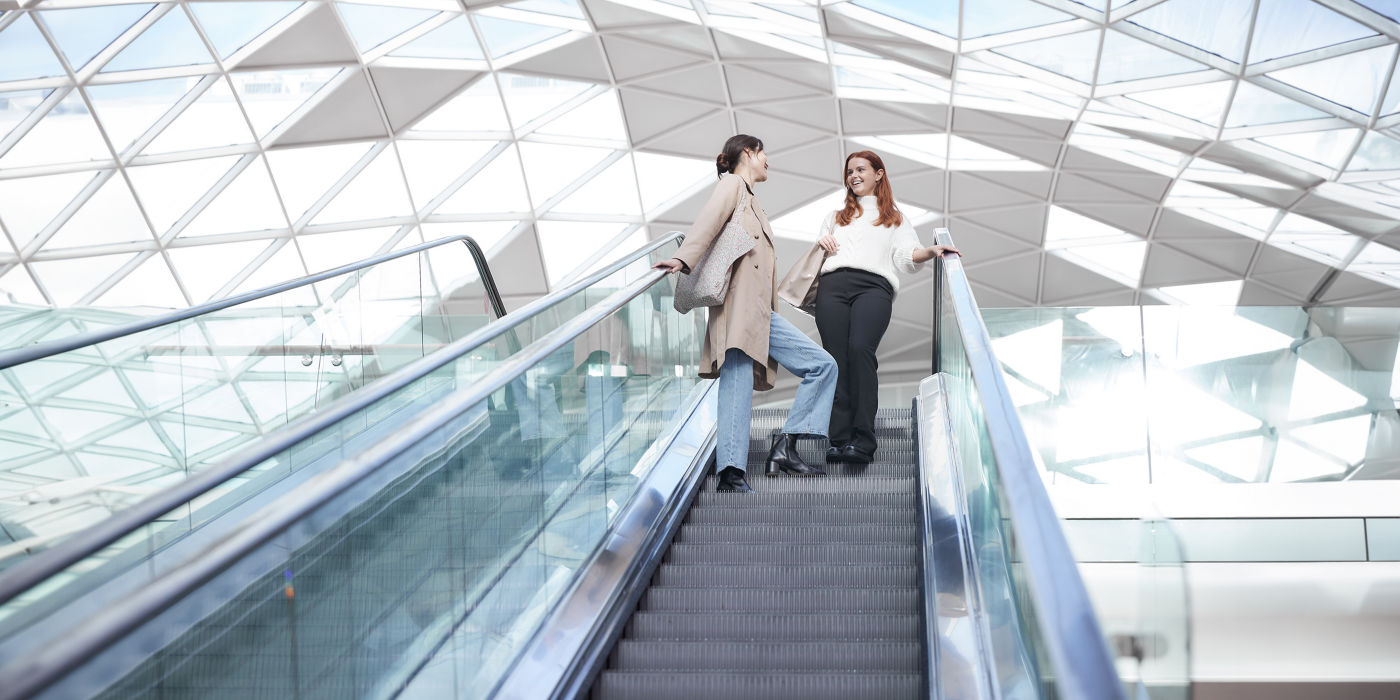OLE_LINK7Escalators often get a bad rap for safety. However, they’re actually one of the safest modes of mass transportation today when used properly. While incidents do occur, understanding escalator mechanics, proper use, and safety measures can significantly reduce risks. In this article, we’ll debunk common misconceptions and provide tips on escalator safety.
Escalator Safety vs. Stair Safety: A Comparative Analysis
While stairs have been a part of human infrastructure for a long time, they’re not without their risks. In the US alone, approximately 1,076,558 people suffer from staircase-related injuries each year. In contrast, an average of 6,000 people per year are injured on escalators. This stark discrepancy underscores the relative safety of escalators, which can be attributed to their controlled pace and uniform steps.
Escalator Safety: An Introduction
Escalators are common in shopping malls, airports, metro stations, and buildings worldwide. Despite their ubiquity, safety misconceptions persist. It’s crucial to address these concerns and emphasize the importance of adhering to safety guidelines for a secure ride.
The Mechanics of Escalators
First invented in the late 19th century, escalators have transitioned from luxury items to everyday fixtures in public spaces. They’re designed to transport large groups of people efficiently between floors. Powered by electric motors, escalators consist of linked steps that cycle on a track, forming a continuous moving staircase. Their design and regular maintenance schedules prioritize safety and efficiency, making them a reliable transportation option.
Top Escalator Safety Tips
- Hold onto the handrail: This maintains balance and prevents falls.
- Stand facing forward: This allows you to see where you’re going and react quickly if needed.
- Do not sit on the steps: Escalator steps can catch lose articles of clothing and cause injury. Always remain standing.
- Ensure footwear is secure: Loose shoes and shoestrings can get trapped in the escalator mechanisms.
- Avoid large or bulky items: These can obstruct the path or unbalance riders.
Safety Tips for Specific Situations and Groups
- Children: Always hold their hands and never let them sit or play on the steps or handrail.
- Elderly and those with mobility issues: Maintain a firm grip on the handrail and step on and off carefully. Consider using elevators if escalators pose a risk.
- Carrying Packages: If you must carry packages, ensure they don’t block your view or impede your movement. Carry only what you can manage without compromising your grip on the handrail.
- Grocery Carts, Wheelchairs, and Strollers: These should NOT be taken on escalators. Use elevators when transporting these items.
- Wearing Crocs or Loose Footwear: These shoes can become lodged in the escalator’s steps or sides. Opt for snug-fitting, closed-toe shoes when riding an escalator.
- Pets: Unless they’re small enough to be carried securely, pets should not be taken on escalators for their and others’ safety. Large pets should use the stairs or an elevator with their owners.
How to Ride Escalators Safely
- Approach with Caution: Ensure the escalator is clear and moving in the right direction before stepping on.
- Step On Squarely: Place your foot firmly in the center of the step, avoiding the edges.
- Secure Your Grip: Grasp the handrail immediately upon stepping onto the escalator.
- Stand Steadily: Keep to the center of the step and avoid leaning towards the sides.
- Mind Your Step: Pay attention as you reach the end of the escalator to step off smoothly and promptly.
- Keep Clear of Edges: Ensure your clothing, shoes, and personal belongings are clear of the sides of the escalator where entrapment can occur.
- Step Off Promptly: Don’t hesitate or stop upon reaching the end; move clear of the escalator’s exit area immediately.
- Do not use the escalator as stairs: When the escalator is in motion, stand still on your step and let the escalator do the work. If the escalator is not running, use regular stairs or an elevator instead.
When used correctly, escalators offer a safe, efficient mode of transportation. By understanding their operational mechanics and adhering to recommended safety practices, the risk of accidents can be significantly reduced. As you navigate through busy spaces, remember these safety tips and prioritize your safety and that of others while using escalators.
Legal Disclaimer:
The information in this blog post is provided for educational purposes only. While we strive to provide accurate and up-to-date information, the use of escalators and adherence to safety tips are at your own risk. We strongly advise readers to always follow the safety instructions provided by escalator manufacturers and to adhere to local laws and regulations regarding escalator use. We are not liable for any accidents, injuries, or damages resulting from the use of escalators or reliance on the information provided.
